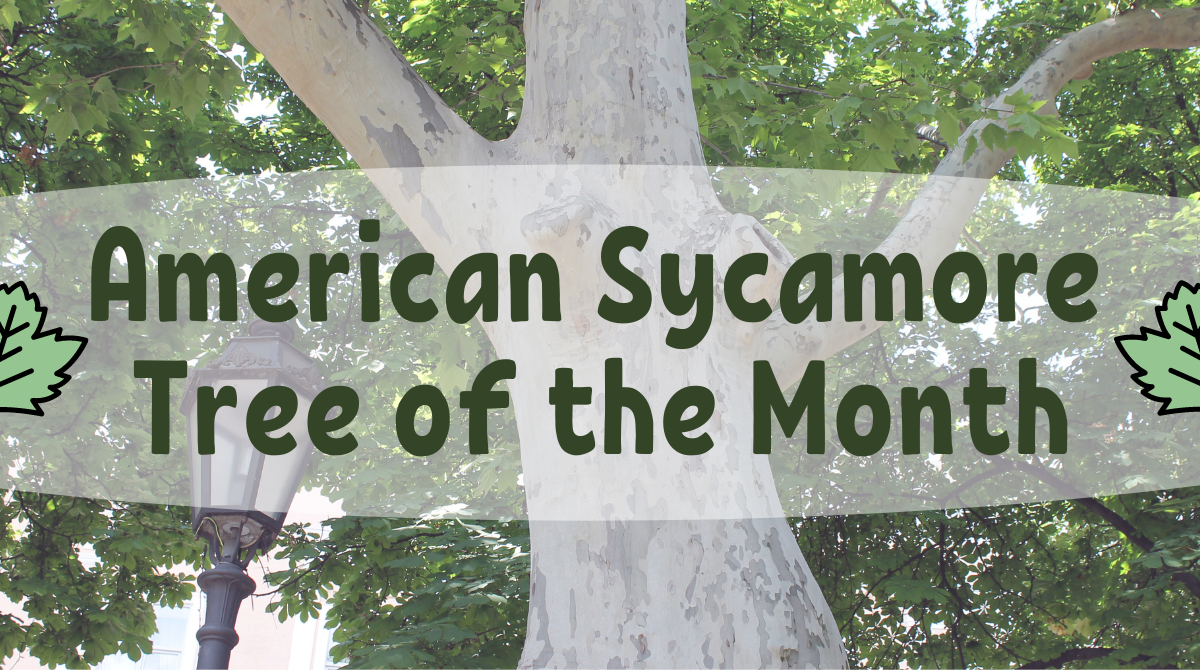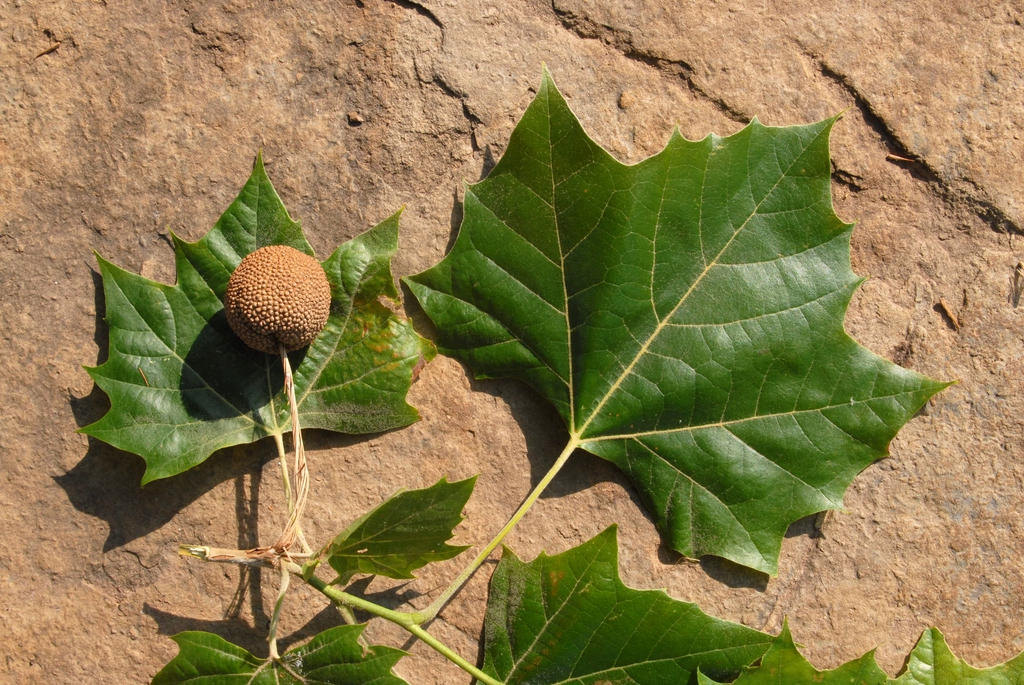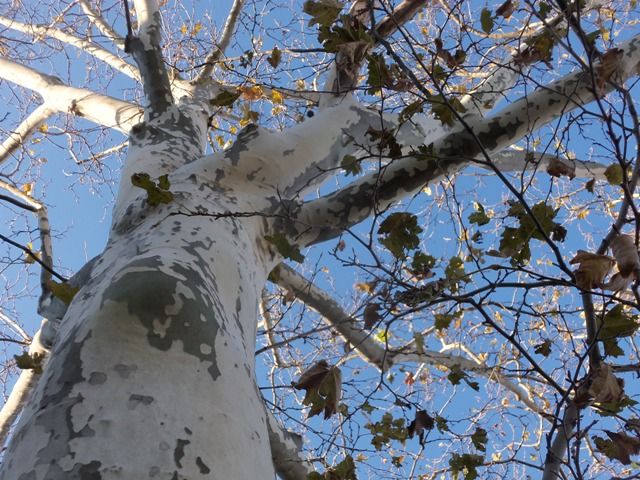
Buy the TreesCharlotte beer, support the canopy
6.03.21
6 Tree Tips for the Summer
6.27.21
As we splash into summer, we want to highlight the American sycamore as June’s tree of the month. It’s a part of the Plane tree family (Platanaceae), and is also known as American planetree, buttonwood, or buttonball tree. It is probably most famous for its leaf shape and unique bark pattern. The trunk and branches have mottled, light-colored bark that flakes off as the tree grows larger, producing its “jigsaw” look. This large tree is perfect to lounge under on a hot day, as its large leaves and spreading canopy provide great shade.
Size at maturity:
Height: 70-100 feet
Crown: 65-80 feet
Shape:
- Wide-canopied crown, with a thick, single-stemmed trunk. Large in size.

Leaves:
- Simple, broad leaves with 3-5 lobes, shallow sinuses, and a long apex. The underside of the leaf can be somewhat fuzzy.
Flowers:
- Flowers appear in small, yellow clusters and are pollinated by wind. Both male and female flowers appear on the same tree.
Fruit:
- Round, somewhat spikey golf-ball sized fruit that hangs from branches. The fruit starts as a light green color, the turns brown and falls off by winter. Seeds inside sometimes consumed by birds.
Sun:
- Full sun is ideal.

Soil:
- While they can grow in almost all soil, they thrive in rich and moist soil. Sycamores can also tolerate some flooding.
Growth:
- About 2 feet per year, but saplings can grow even faster.
Natural range:
- Eastern and central United States.
Use:
- Most commonly used to provide shade and gorgeous canopy in large yards or naturalized areas. Can also be planted along steams to stabilize soil.
Environmental/Wildlife benefits:
- The sycamore’s impressive size and branching provides suitable habitat for birds and small mammals. Wood ducks especially like to uses these trees as nesting areas. Sycamores have good flood tolerance and extensive roots systems, making them good trees for riparian zones.
Fun Fact:
- Native Americans would carve out the trunks of American sycamores to make canoes.



